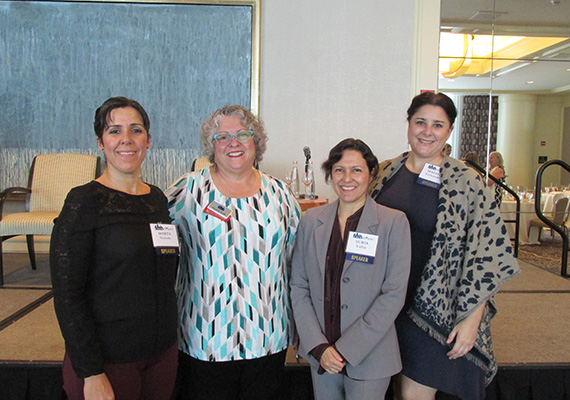Trending
Municipal support for “active design” builds in Miami-Dade: panel

Municipalities across Miami-Dade County are considering “active design” guidelines that encourage exercising, socializing and other elements of a healthy lifestyle.
“We are working with 12 municipalities,” said Cheryl Jacobs, executive vice president of the Miami chapter of the American Institute of Architects and the Miami Center for Architecture and Design. “The city of Miami Beach and Pinecrest have adopted active design.”
Jacob, speaking Wednesday in a panel presentation at a Commercial Real Estate Women’s luncheon at the Four Seasons Hotel Miami, also said the initiative should go to the county commission soon.
New York City has adopted active-design guidelines to limit the incidence of such illnesses as diabetes and hypertension, said Jacobs, the moderator of the panel at the CREW-Miami luncheon.
But in Miami, “we moved away from the narrow definition of health, a very physical definition of health, to a broader perspective on social, physical and mental wellbeing,” she said. “Social isolation is becoming one of the most damaging results of our sprawling development.”
Examples of active design are wide-ranging, from making stairs more inviting and making parks accessible to users of all ages to building “complete streets” – not just for motorists but also pedestrians and bicyclists. Panelist Marta Viciedo said signage can support active design with “personal cheerleading messages” that tell pedestrians, for example, how many calories they’d burn by climbing a flight of stairs.
“Signage that is playful and fun can play a role in an active design strategy,” said Viciedo, project manager, Active Design Miami, and founder of Urban Impact Lab.
Even in the absence of municipal guidelines, some developers already engage in active design to make their properties more marketable, Viciedo said. Along the Underline park beneath the Metrorail line in Miami, for example, “property values are going up,” she said. As planned, the Underline would redevelop the 10-mile-long path from the Miami River to Dadeland into an active linear park and trail.
“Developers are building new multifamily housing units around the Underline, but they are also contributing to how the park is connecting to the development, making it a seamless transition from their development to the park,” she said.
Adding active-design elements to an existing building is challenging but could include increased open space, better-lit stairs and easier access to the property by pedestrians and bicyclists.
Panel member Suria Yaffar, principal, Zyscovich Architects, said adding active-design features to an existing building is easier if the property use changes from, say, office to residential.
Zyscovich designed Aventura ParkSquare, a mixed-use project under construction in Aventura that has a health and wellness focus, with elements that include outdoor staircases with views of the city and project as opposed to enclosed staircases.
Another panelist said design professionals can nudge municipalities toward the adoption of guidelines for active design by promoting its health benefits.
“It’s a great way to approach local elected officials when you talk about health,” said Maggie Fernandez, founder, Sustainable Miami. “What makes active design unique is it’s not threatening. We’re not talking about climate change or any other ‘bad’ words.”




